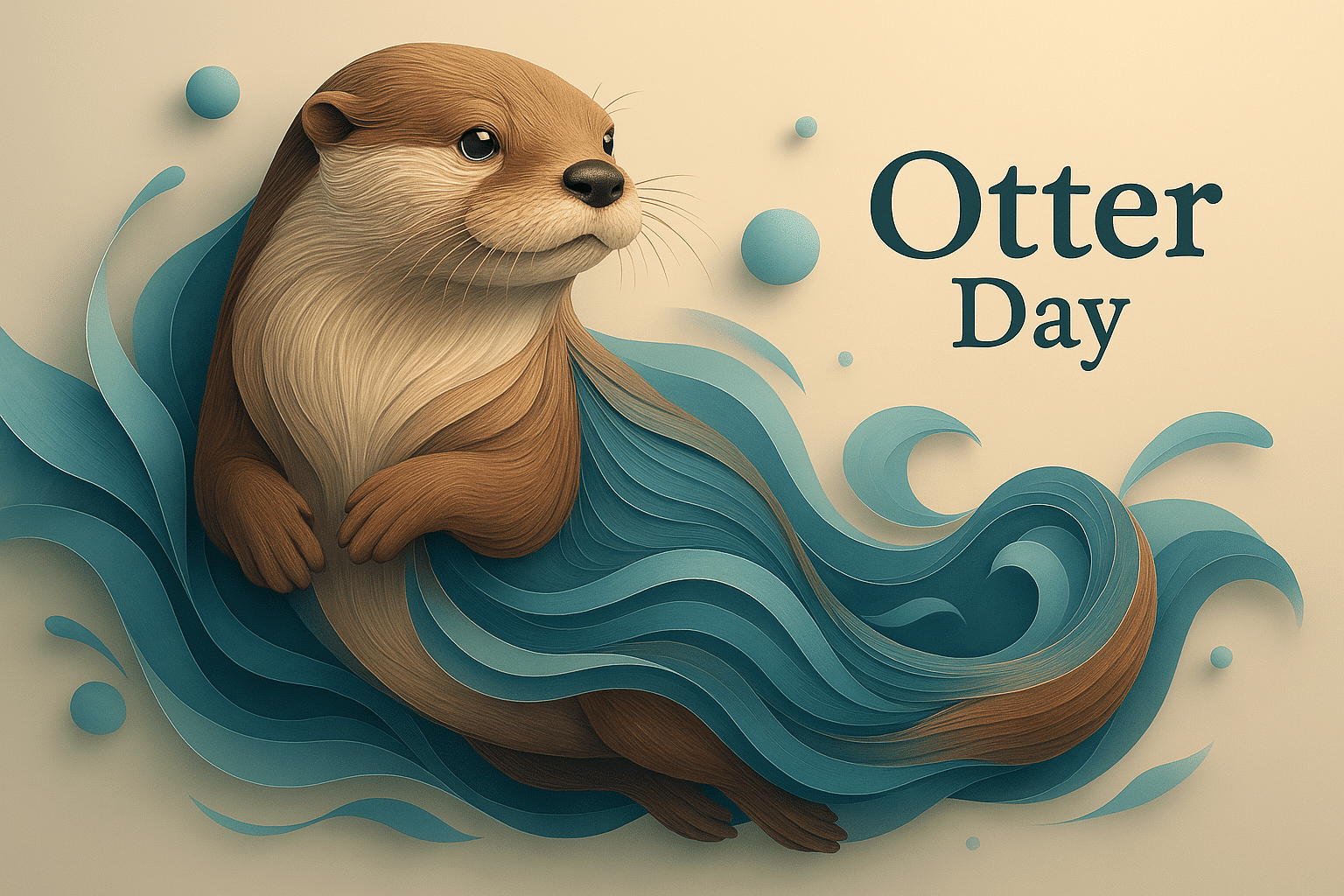What is World Otter Day?
World Otter Day is observed every year on the last Wednesday of May. The day draws attention to otters and the urgent need to protect them. It celebrates their role in nature and highlights the dangers they face, including habitat destruction, pollution, and illegal trade.
Otters are vital to healthy aquatic ecosystems. World Otter Day raises awareness about these playful and intelligent animals while encouraging action to support their survival.
History and Origin
World Otter Day was created by the International Otter Survival Fund (IOSF). The organisation wanted to raise global awareness about the 13 otter species and the threats they face. Many species are in decline and often overlooked in conservation discussions.
The first World Otter Day was launched to put otters “on the map” and give people around the world a chance to learn, act, and advocate for their protection. Since then, the day has grown to include events, campaigns, and educational efforts across the globe.
Who Participates in World Otter Day?
- Wildlife conservation groups: Lead efforts to protect habitats, monitor populations, and educate the public.
- Zoos and aquariums: Host talks, feedings, and interactive displays about otters.
- Schools and educators: Create lessons and activities to teach students about otters and ecosystems.
- Environmental activists: Use the day to highlight broader environmental issues linked to otter survival.
- Nature lovers and families: Visit nature reserves, watch documentaries, or share otter facts online.
Slogans and Themes
Slogans include “Protect Our Otters,” “Otters Need Our Help,” and “Save Otters, Save Ecosystems.” Themes often focus on conservation, the importance of clean waterways, and the relationship between humans and the natural world.
Colors symbols and patterns
Colors
- Blue: Represents rivers, lakes, and the aquatic homes of otters.
- Green: Symbolises forests, wetlands, and natural ecosystems.
- Brown: Reflects otter fur and earthy environments.
Symbols
- Otter paw print: A playful and recognisable symbol of the animal.
- Waves or water drops: Highlight the connection between otters and clean waterways.
- Otter silhouette: Often used in logos and artwork to represent all otter species.
Patterns
- Ripple marks: Suggest movement in water and environmental impact.
- Fish scales: Symbolise the otter’s food sources and aquatic lifestyle.
- Fern and riverbank motifs: Connect the day to natural habitats and lush environments.
Most Used Hashtags
- #WorldOtterDay
- #SaveOtters
- #ProtectOtters
- #OtterConservation
- #OttersInTheWild
How to Celebrate World Otter Day:
- Learn about otters: Read up on the 13 otter species and their role in nature.
- Visit a wildlife centre: Support facilities that care for or educate about otters.
- Donate to conservation: Help organisations like IOSF continue their work.
- Share online: Use social media to post facts, art, or photos about otters.
- Reduce water pollution: Take simple steps to keep rivers and lakes clean.
Why is World Otter Day Important?
Otters are more than cute animals. They are vital for healthy rivers and wetlands. Yet many species are endangered or declining fast. From South America to Southeast Asia, otters are losing their homes and falling victim to poaching.
World Otter Day calls attention to their struggles and shows that change is possible. Protecting otters also protects entire ecosystems. By standing up for otters, we support clean water, rich biodiversity, and a better future for the planet.
Features
- Animals
